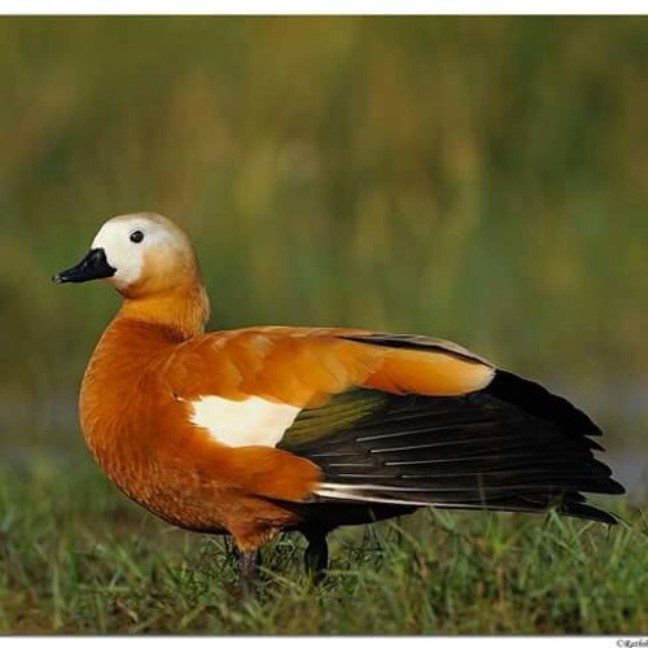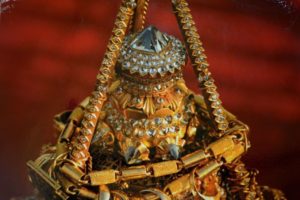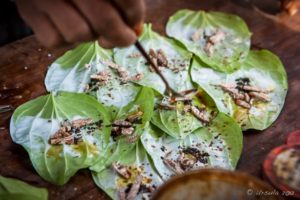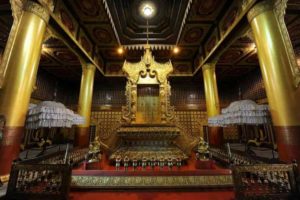Hintha is transliteration of Sanskrit word Hamsa. It is actually a real bird surrounded by myths and legends, since antiquity. Real hamsa is a graceful swan-like bird. It can fly. It is amphibian and migratory in character. It can be seen in the extreme north of Myanmar during winter. They are usually found in pairs: about 25 pairs in a flock.
Hamsa’s fidelity to its spouse is phenomenal. All along the upper reaches of Ayeyawady one can see hamsas foraging for food, on sand banks and sandbars. In each flock there is at least four or five loners moving about alone although there is no lack of potential mates. They are widows and widowers but they never remarry. They finish their journey alone.
According to Mon legends the ancient city of Hamsawaddy (now called Bago) was built 2000 years ago. It was the outcome of a prophecy given to a pair of hamsas. Five hundred years earlier it was prophesied that a city shall be built at that spot. We have a hillock in Bago called Hinthagon, meaning hamsahill or high ground.
Again the emperor Bayint Naung while prescribing weights and measures along with units of currency also ordered the weights in the form of hamsa. Those weights are greatly valued and keenly sought after antiques today.
According to Brahminic legends, the Lord Creator “the Brahma” married Svarasvatti. She always travelled on a hamsa’s back. She is believed to be the guardian of poetry, music and learning. Some opine she also guards Buddhist literature. So we find a hamsa atop the prayer post in the vicinity of stupas and temples. This is a popular belief about the origin of hamsa and the prayer post.
Myanmar royalty used hamsa-shaped betel boxes which are proudly displayed in the National Museum. It also adorned a 2 anna stamp became 15-pya stamp, that was the inland letter rate for half a century. It is still current and also legal though supplanted in 1964. It has been so long in public view that it has become the symbol of postal service. Myanmar Post Office itself could not ignore it for long. Now a 5-kyat stamp has a much more graceful hamsa adorning it.
Sourced: Myanmar Culture Traditions and Scenery, Mythical Creatures
by U Than Pe, Tour guide




